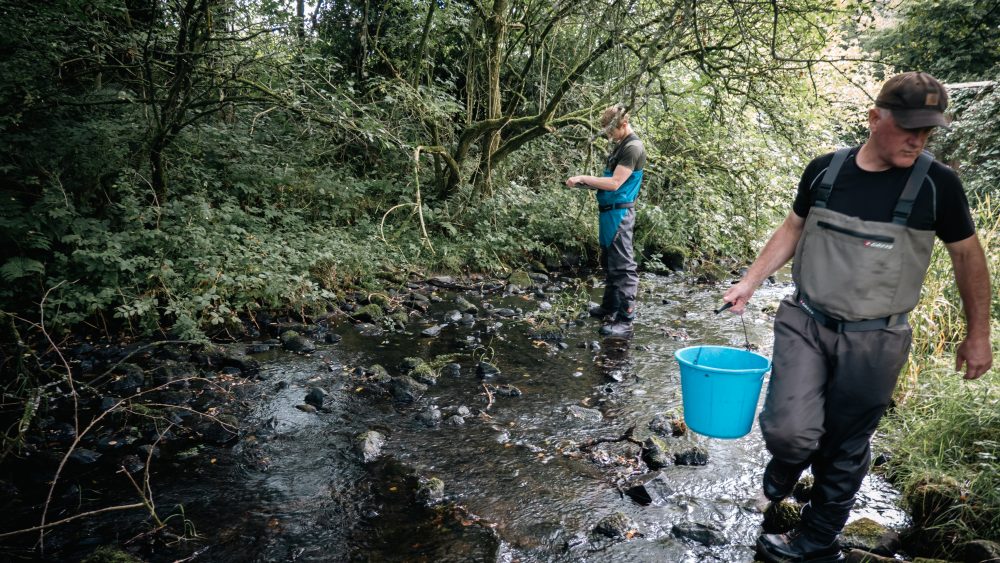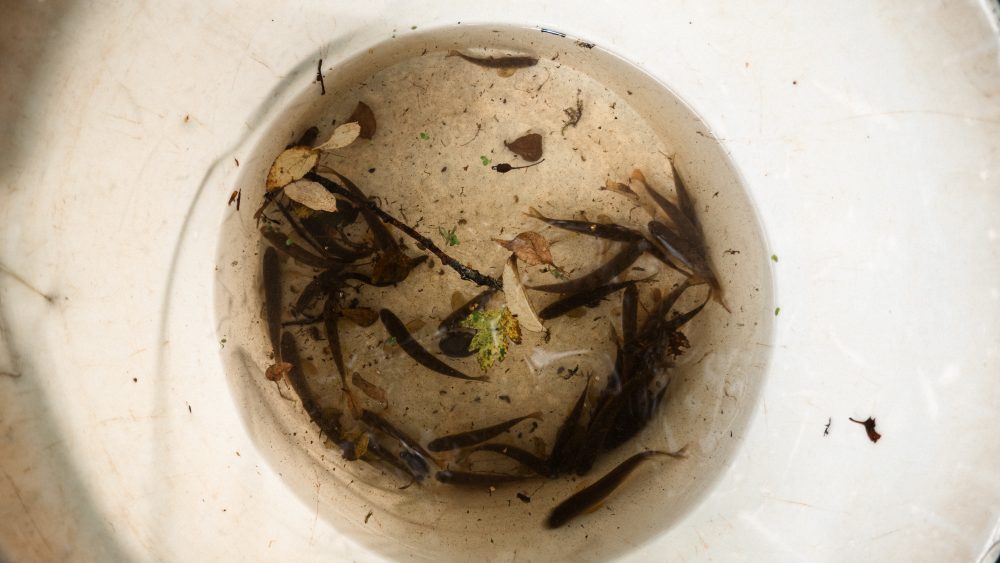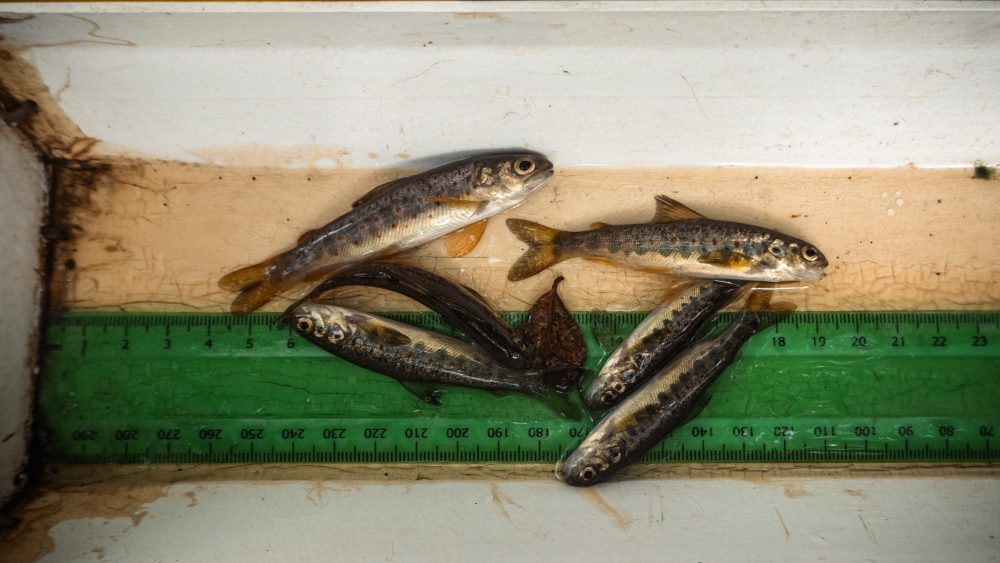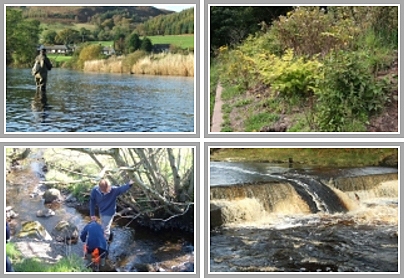The week before last we were undertaking surveys to assess salmon production across some of the burns in the Doon catchment. One of these surveys was in the upper Purclewan Burn which drains Martnaham Loch and enters the River Doon just downstream of Dalrymple. The burn is not of any great size and where we survey the burn the width will only be 3 meters in width. Historically the burn has been stocked with salmon alevins from the Doon Board’s Hatchery which last operated in 2018 but has not had fish in the hatchery since this date. During the period where the hatchery operated salmon alevins were periodically stocked into the Purclewan Burn. During subsequent survey work we never found any salmon which could be conclusively determined as being of wild origin. This is one of the potential issues with hatchery stocking, as it becomes impossible to determine if you are surveying wild or stocked origin fish. It is seen as bad practice to stock over wild produced fish as if you have wild fish capable of doing the job themselves without intervention then why are you stocking? This is one of the questions that need to be asked when determine the requirement to stock.
Since the hatchery has ceased we have found the salmon fry numbers across the Doon catchment annually to be some of the most consistent across Ayrshire and this is somewhat borne out by the rod catch which is again the most consistent within Ayrshire in recent years,
- A bucket of salmon and trout fry
- A trout fry (tope left) surrounded by salmon fry
So when we undertook a survey a few weeks ago we were very encouraged to find naturally produced salmon fry. We didn’t find any parr although with just one site this doesn’t rule out spawning in previous years. It is very encouraging that the burns across the Doon catchment are performing well and producing salmon. Compared to other Ayrshire rivers the Doon is lacking in spawning tributaries so it is very encouraging to find that the spawning tributaries that are accessible and in good condition are being used by fish.

Ian sets up the buckets for processing whist Cameron records the habitat parameters of the site.



